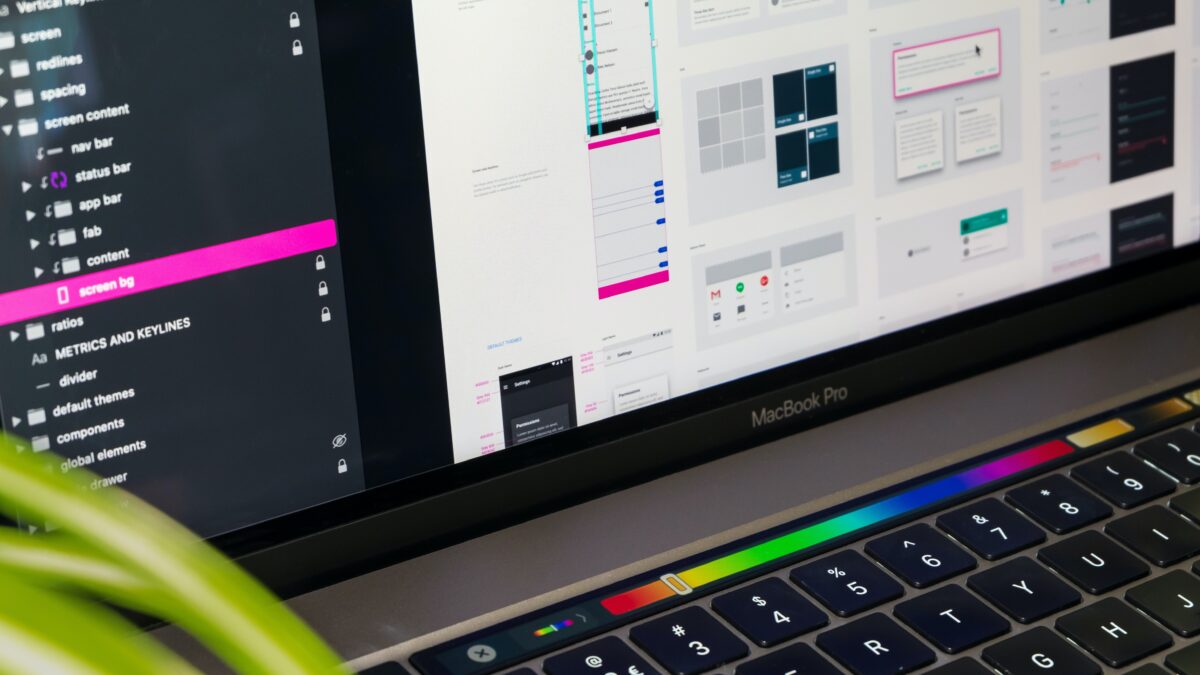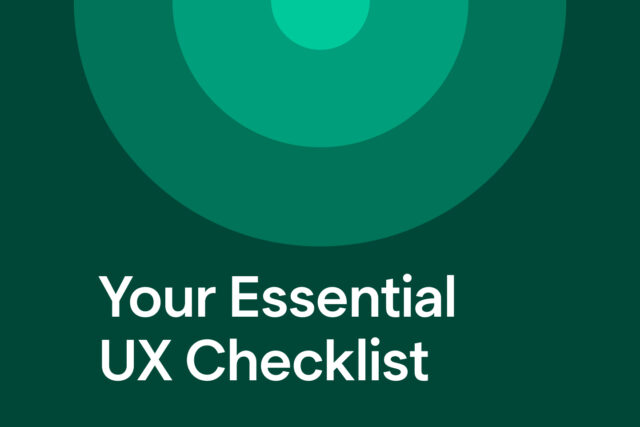So, you’re looking to redesign your website? There are several reasons you might need a website refresh. Whether it’s to stay aligned with brand strategy or keeping up to date with the latest technologies available, let’s look at why website redesign is so important and how to know when it’s time for a new one.
Start by keeping your current site up-to-date
Updating and improving a website should be a continuous task in a company’s workflow. Small incremental changes and updates can differentiate between a good and bad user experience, so continuously checking, testing and implementing changes is key to keeping your users engaged. It can feel time-consuming and unnecessary, but it’s important to remember that having an easy-to-use, visually-pleasing site can massively impact the credibility of your business.
When small changes aren’t doing the job and your site begins to feel outdated, its speed has slowed and you’re losing vital traffic, it could be time for that redesign. You might not have to start from scratch, but it’s always good to take a big step back and look at the wider picture. What are the advances in web technologies? What new features are available to you? What are the latest trends? How do you stay innovative and competitive? And, most importantly, what do your users want from your site?
Signs it’s time for a website redesign
The average lifespan of a website is around 2 and a half years before a major redesign takes place. Various factors can influence the need for this change.
A change in business strategy
It’s not uncommon for businesses to change direction, expand, or update their offering. It’s important that the online window, a.k.a. the website, reflects these changes and your users see an up-to-date version of your business.
Responsive design for new devices
In 2016 mobile web browsing overtook desktop, now making up 57.1% of global daily internet use. Responsive design is about offering a seamless experience across any device – an essential consideration in any website’s design. The most used devices globally are mobile phones, laptops/desktops, and tablets, so if your website doesn’t cater for these, then it’s certainly time to look at a redesign.
There are new technologies appearing on the market every year from AI and VR to wearables. Keeping an eye on new features and emerging technologies will place you ahead of the game when it comes to designing for the latest popular device.
Accessibility
If website accessibility isn’t on your radar yet, it needs to be. It should be a key consideration when it comes to all modern website designs, not only because the UK government is starting to drum down its policies and improve overall standards, but because sites that are designed for accessibility actually enhance usability for everyone.
It doesn’t have to be a daunting task; you can easily incorporate inclusive design into your website from using high-contrast colours to including alt-text on images. Our Head of Experience, Francis, has written a guide to these simple real practices and tools you can use.
Outdated design and aesthetics
You need your users to trust your website. Validating your site’s trustworthiness with a look and feel that aligns with your brand, up-to-date branding that falls in line with design trends in your industry and a relevant design that utilises design features and technologies, will improve your online presence and user engagement.
On average people in the UK spend 3 hours and 40 minutes on the internet daily. You can be sure customers are browsing multiple websites per day and constantly seeing trends and changes in website design. If your site looks outdated, uses old features, or your branding is misaligned, it will steer your users away and have a heavy impact on your bounce rates.
Poor user experience
This, in basic terms, is when your website is hard to use and there are stumbling blocks in the way for your users to get to where they want to go. For example, a website that is hard to navigate, that overloads users with content, that has unnecessary pop-ups or slow loading speeds can be a frustrating experience for users.
A well-designed website, from a user’s perspective, gives them the information they’re after quickly. It should be easy to understand where to go and how to navigate around the site, loading speeds should be efficient, content should be relevant and up-to-date (this goes for imagery and branding too), and content should be easy to scan and digest quickly.
If you don’t think you’re giving users the best experience, our helpful UX checklist is a great tool. Written to help you start identifying which areas of your UX might need improvement.
Decrease in ranking and search traffic
There could be several reasons you start to notice a decrease in your search traffic and ranking and, guess what? Some of the most important are listed above. An accumulation of these will really affect your search ranking. Google now factors ‘user experience’ in its search results, so it’s no longer just about utilising key words, it’s about the experience as a whole. Is your website giving users what they want? If the answer is “no”, or even, “perhaps not completely”, then it’s time to look at redesigning your website to increase engagement and attract more visitors.
Your strategic plan for a redesign
So, you’ve decided it’s time for a revamp of your website but you don’t know where to start. Let’s look at how to start building a strong strategic plan to get your site where it needs to be.
Set clear objectives and goals
Setting clear goals for your redesign will assign the project purpose, allowing you to track progress and measure your success. It’s important to align your redesign with the overall goals and objectives behind your business. Firstly, ask what is the most important action for your users to take on your website – why are they there?
Having specific objectives will give the project focus. It’s too easy, especially in large companies, for the vision to be diluted with ideas and opinions – having a number of key goals will help align team members and give you a stronger outcome.
Understanding the call to action (CTA) of your site and making sure you align as a company is going to help you make key design decisions later down the line. So, what do you want your customers to do once they are on your site? Request a quote? Book a free consultation? Purchase an item? Once you’ve decided, make sure it’s in your goals and translated across your user journeys when you design your site.
Understand your users
A mistake we often see is businesses putting what they want on their website before thinking whether that’s what their users are there to see. Irrelevant content or a disruption in a user journey will only annoy users so being clear on why users are visiting your site and what they want to achieve by being there is vital.
Customer research looks at understanding users, what their expectations are and their needs and motivations. You can do this in a number of ways, from interviews to user testing or quick and simple questionnaires.
Competitor analysis
Seeing where you stand in the market can be really helpful. Have a look through competitors’ sites and note what they do well and what you think they could improve on. Have user journeys in mind and test them out when browsing their sites. Don’t get hung up on anything you think is ‘fancy’ or branding you love, this is about what performs well and what gets the user journey fulfilled in the best way.
If you’re not sure who your key competitors are we wrote a handy guide to identifying your competitors online.
Consider SEO early
Yes, you heard. We can’t stress how important SEO is to consider from the early stages of designing your site. Keyword research will help you build a suitable site map that’s SEO optimised.
If you’re redesigning a site, consider a content inventory and keyword audit to make sure you’re migrating the best content and links over to your new site. It will highlight what to keep, what to rewrite and what to scrap all together.
Choose the right CMS
You might want to stick to the same CMS (content management system) your current site is built on or you might take this opportunity to choose something that better suits your needs. This is going to be the framework your site is built to, it’s going to make your life easier and give you the functionality to help edit content easily and quickly.
We use WordPress because of its flexible framework, making it suitable for a wide range of projects. Updating content is extremely easy. We can build in all sorts of helpful features to make the management of your site simple.
Get started
Now you’ve got some of the tools to help look out for when and why you might need a website redesign and some tips on how to make it happen. Remember, you might be saved from a big website project if you keep on top of incremental tests and changes.
Never forget the importance of user testing and analytics to help implement continuous improvement to your site and stay ahead of the game. If you do choose to opt for a wider website redesign, see it as an opportunity to make your site the very best it can be for your customers.
Need a hand with your next website redesign? Get in touch.





